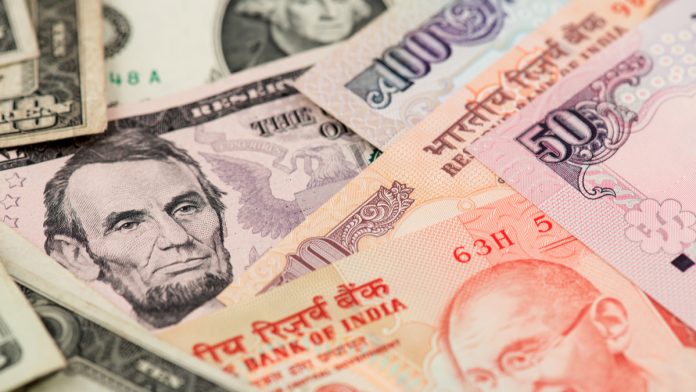- Indian Rupee (INR) rises after yesterday’s losses
- Wholesale inflation eased to 0.27%
- US Dollar (USD) fell after weaker PPI data
- Dovish Fed commentary also pulled USD lower
The US Dollar Indian Rupee (USD/INR) exchange rate is falling after gains yesterday. The pair rose +0.15% in the previous session, settling on Tuesday at 83.09. At 14:00 UTC, USD/INR trades -0.07% at 83.03 and trades in a range of 82.96 to 83.12.
The Indian rupee was pushing higher, capitalizing on the weaker U.S. dollar to spite Indian wholesale prices rising at a slower pace in January.
Indian wholesale prices rose 0.27% year on year in January compared with a 0.73% rise in December. This latest figure was below economists’ expectations of 0.53%. This was mainly due to an easing in food prices and a steep decline in prices of manufactured products.
Weakening inflationary pressure has continued into January as food prices also rose 3.79% yeah, one year down from 5.39% in December.
The data comes after figures last week showed the country’s annual retail inflation rate was at a three-month low.
The US Dollar is falling across the board. The US Dollar Index, which measures the greenback versus a basket of major currencies, trades at -0.22% at the time of writing at 104.73, after gains in the previous session.
The USD dollar is falling after US wholesale inflation came in slightly cooler than expected and after less hawkish comments from Federal Reserve official Goolsbee.
US PPI, which measures Inflation at the factory gate level, fell by more than initially expected in December. The producer price index fell 0.2% in December, more than the 0.1% that was previously expected.
Meanwhile, comments from Chicago Fed president Austan Goolsbee also helped pull the US dollar lower. Goolsbee suggested that Tuesday’s inflation report didn’t change the downtrend in consumer prices, and he played down the impact of CPI’s rate rise to 4%, which is the highest since June.
However, it’s worth noting that Goolsbee is a well-known dove.
There is no more U.S. economic data in focus today. Attention will now turn to US retail sales and jobless claims as well as industrial production on Thursday.
At the time of writing, according to the CME Fed watch tool the market is pricing in a 90% probability of the Fed leaving rates unchanged in March and a 59% probability of the Fed leaving interest rates unchanged in May.





